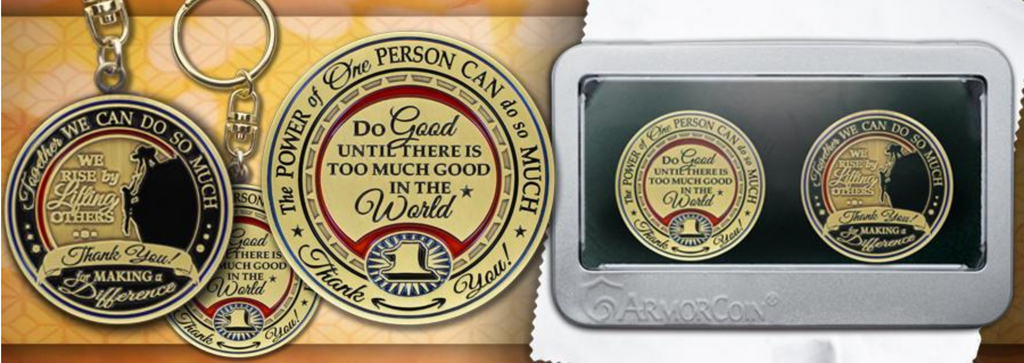You may have seen military personnel carrying a small coin or medallion with an insignia or emblem etched in fine detail. They’re called challenge coins, and few traditions in the military are as iconic as carrying one.
In many units, the coins are only given to soldiers who are favored by higher-ranking officials, and in some units members even trade or collect the coins. Those new to the military try to acquire one by being the best soldier they can be.
History of the Coin
While the custom of carrying challenge coins has been going on for a long time now, there are a few theories on when the practice actually began, with some even arguing that the idea of challenge coins dates back to the Roman Empire rewarding soldiers with coins as recognition for their achievements.
But the most common theory is that challenge coins originated from medallions given during the First World War.
During the war, young men from different backgrounds across the United States volunteered to serve in the Army Air Service. One of those men was a wealthy lieutenant who had medallions made for each man in his unit, to raise their morale.
A short time later, one man in the unit’s plane was shot down over Germany. The pilot survived the crash but was captured by German soldiers. They took all his belongings except a leather pouch strapped around his neck that contained the medallion. He was taken to a town on the front lines of the war, and there he managed to find civilian clothing, and mingle in with other civilians to escape, eventually making it to a French outpost. But because enemies frequently tried to pass as civilians, the French officers were skeptical of his identity, accused him of being a spy and threatened to execute him. With all of his belongings taken away, and no way to prove he was an American pilot, the man was in grave danger once again. That’s when he remembered the medallion. Unstrapping the brown pouch from his neck, the pilot showed the Frenchmen the coin held inside of it. One of the French officers recognized the insignia etched in the coin, and immediately informed the others that the pilot was not a spy. The pilot was spared and reunited with his unit.
History of the Challenge Coin Challenges
One theory is that the modern day “challenge” of the challenge coin is said to have begun in Vietnam. An infantry-run bar tried to keep non-infantry men out by making anyone who couldn’t prove they had been in combat buy drinks for everyone in the establishment. Accepted form of proof started out with enemy’s bullets and other items acquired in battle but eventually coins with the unit’s insignia emblazoned on them became the currency of the challenge.
Another theory is that the challenge stems from a German drinking tradition called the “Pfennig Check.” The Pfennig was the lowest valued coin in Germany, and if you didn’t have one on you when there was a call for a pfennig check, you had to buy the group a round of drinks. It is said that American soldiers adopted the pfennig check, but by using their medallions instead. A soldier would walk up to the bar and put down his medallion, and drinks were on any of his comrades that didn’t have their medallion on them.
The “challenge” has evolved over the years, and each organization or branch of the military may have different (and most of the time unwritten) rules for what the “challenge” really is. But for most people who carry a coin, it’s a way to prove they belong to a certain organization.
Challenge Coins Today

Now, around a century after the first challenge coin, the special medallions aren’t just reserved for military personnel anymore. The intricately designed coins caught the attention of people outside of the military, and the practice of carrying challenge coins as proof of membership and a way to create a sense of belonging to an organization has spread like wildfire. Through a tradition started by U.S. President Clinton and carried on by President Bush, President Obama, and President Trump, the current commander and chief now have special challenge coins designed for him or her. They give the coins away to service men and women, a select few dignitaries, family members, and other people that have supported the nation in one way or another. But the popularity of the coin has spread far beyond that. Many members of police and fire departments, along with members of groups like the Boy Scouts or The Lions Club carry challenge coins, and the coin continues to serve as a way for people to feel pride in the organizations they represent, and as a sign of solidarity with the military and the sacrifices our servicemen and women have made.



